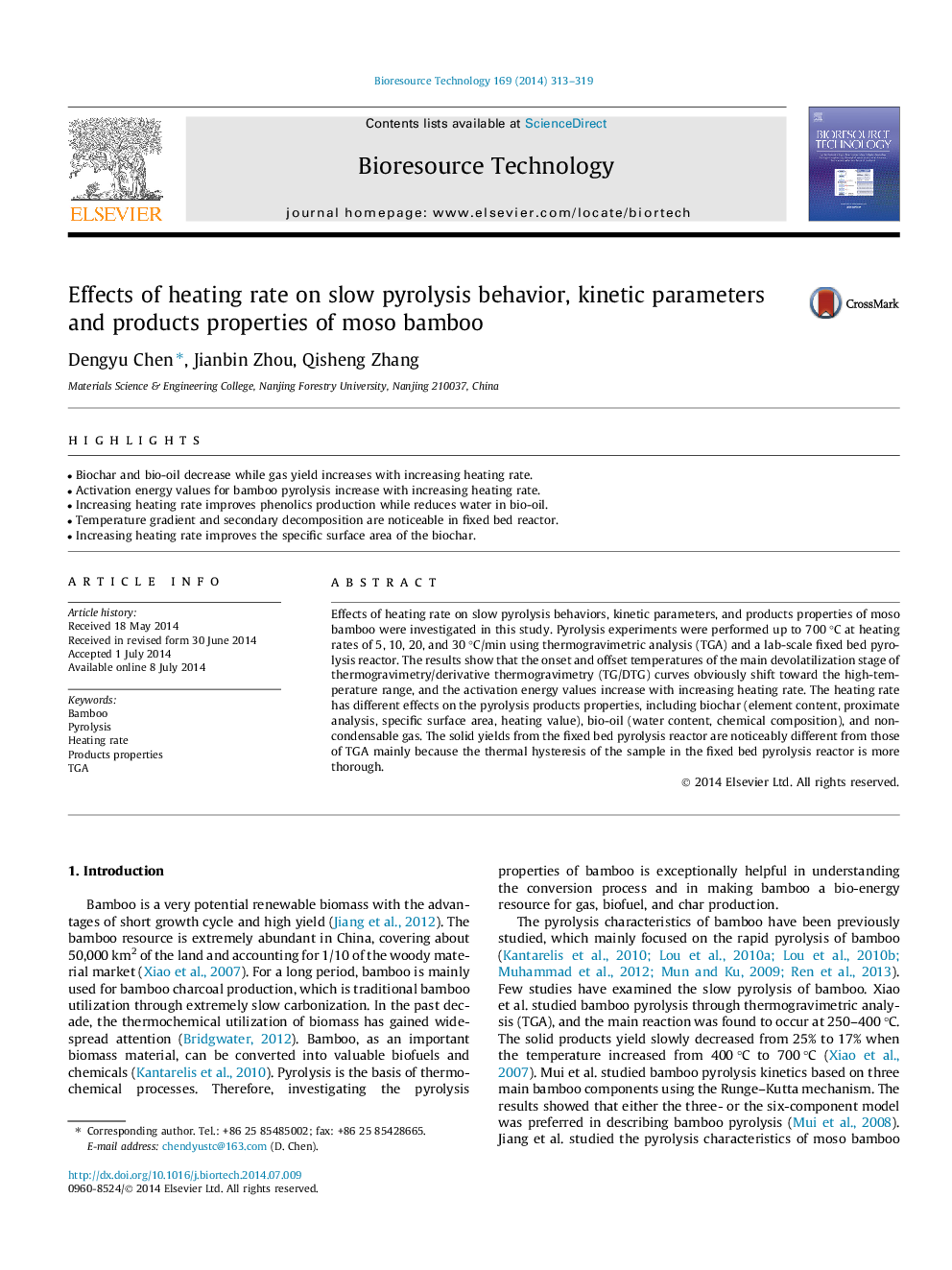| Article ID | Journal | Published Year | Pages | File Type |
|---|---|---|---|---|
| 680689 | Bioresource Technology | 2014 | 7 Pages |
•Biochar and bio-oil decrease while gas yield increases with increasing heating rate.•Activation energy values for bamboo pyrolysis increase with increasing heating rate.•Increasing heating rate improves phenolics production while reduces water in bio-oil.•Temperature gradient and secondary decomposition are noticeable in fixed bed reactor.•Increasing heating rate improves the specific surface area of the biochar.
Effects of heating rate on slow pyrolysis behaviors, kinetic parameters, and products properties of moso bamboo were investigated in this study. Pyrolysis experiments were performed up to 700 °C at heating rates of 5, 10, 20, and 30 °C/min using thermogravimetric analysis (TGA) and a lab-scale fixed bed pyrolysis reactor. The results show that the onset and offset temperatures of the main devolatilization stage of thermogravimetry/derivative thermogravimetry (TG/DTG) curves obviously shift toward the high-temperature range, and the activation energy values increase with increasing heating rate. The heating rate has different effects on the pyrolysis products properties, including biochar (element content, proximate analysis, specific surface area, heating value), bio-oil (water content, chemical composition), and non-condensable gas. The solid yields from the fixed bed pyrolysis reactor are noticeably different from those of TGA mainly because the thermal hysteresis of the sample in the fixed bed pyrolysis reactor is more thorough.
